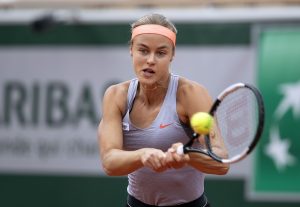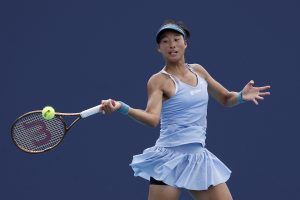In this series, we here at LWOT will be examining the merits of the various claimants to the title of the greatest of all time in the women’s game. Our first contender is the great Australian of yesteryear: Margaret Court.
Margaret Court
Professional career: 17 years (1960-1977)
Total Singles Major Titles: 24
Wimbledon: 3
US Open: 5
French Open: 5
Australian Open: 11
Doubles Major Titles: 40 (19 in women’s and 21 in mixed)
Career Titles: 192
Weeks at #1: 325
Margaret Smith began to dominate youth tennis in Australia at the age of eight. As a 17-year-old she won her first Grand Slam title at the Australian Open. This win launched her international career, gaining her invites to all the top tournaments. She would follow up her first Australian in 1960, with six straight wins at Australia. Two years after her first Major win and a year after her second, she would win the French Open in 1962. It would be the first of five wins on the clay courts of Paris. After her triumph at the Roland Garros, she also went on to win the 1962 US Open, meaning that by the end of the year, aged just 19, she held three of the four Major titles. By the age of 20, she had won Wimbledon to complete the set.
In 1966, at 23 years old and holding 13 Grand Slam Titles, Margaret Smith suddenly retired. But that year she married Barry Court, who convinced her to return, now Margaret Court. In her first year back she didn’t win a single Major. But 1969 would begin one of the most impressive runs in women’s tennis as Court went on a winning streak of historic proportions. She won eight of the next nine Majors with her only defeat coming in the finals at Wimbledon in 1969. Undeterred, she returned in 1970 to win the Calendar Grand Slam, a feat which has since been matched by only three players.
In 1971, she took a leave of absence to have her first child at 29 years old, but she returned from maternity leave to win three of the four Majors in 1973 and again claim the #1 ranking. In 1974, she would have her second child and return to tennis a third time in 1975. But at 34, she never returned to her former standards and finally retired after the birth of her third child with Court in 1977.
Greatest Rival: Billie Jean King
Record: 22-10 (4-1 in Majors)
Arguments For:
She has the most Major Titles of any woman ever. She is only one of three women to have a Calendar Grand Slam and she was dominant from her teenage years almost until her retirement. Court had probably the most impressive two years from 1969-1970, making it to the final at every Grand Slam and all but one of them. Indeed, not only does she have the most Major titles in singles (second is Serena Williams with 23), but she also one of, if not the, greatest doubles players of all time. Court won 19 Major titles in women’s doubles as well as 21 titles in mixed doubles. That combined 40 titles remains a record and put puts her total Major wins at 64, an astounding number.
On top of that she has another member of the women’s top ten as her greatest rival, and it wasn’t much of a rivalry, Court owned King their entire career. For the most part, King won when Court was having children. In fact, Court dominated almost every player she faced, particularly on the biggest stage. She has the greatest female winning percentage in the Majors ever, 91.7 percent and a 20-0 record in the Fed Cup when playing for Australia. Moreover, despite retiring 60 years ago, she still holds seven WTA records including the most important, most Major Titles.
Arguments Against:
The only strong argument against Court being the greatest of all time is her wins in Australian, where she was the most dominant. At that time the Australian Open was viewed as by far the weakest of the four Majors and she won 11 of them. Her competition was as fierce as any the other women we discuss. A fellow top 10 all time shadowed her career.
She also played some of her career before the Open Era, but unlike in the men’s game, the best women played the sport as amateur’s until every tournament was opened to professionals, at which point they all moved to professional status together.
Main photo:
Embed from Getty Images






